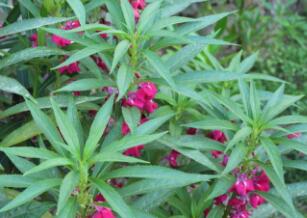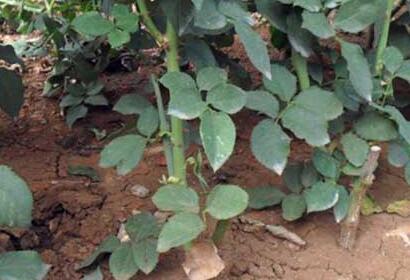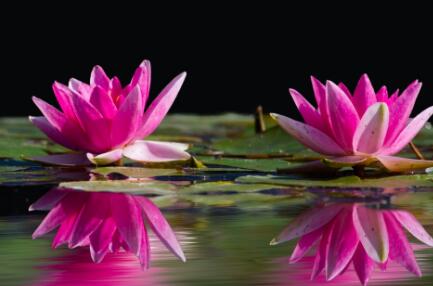Impatiens (henna) specific planting methods and steps to explain quickly collection!
Impatiens, also known as henna, hasty, peach, native to China and India, strong sex, strong adaptability, all kinds of soil can be planted, generally sown with seeds in spring, seedling transplanting, plant height 10 cm to 20 cm after planting, coring can promote branches to blossom, and liquid fertilizer should be applied once or twice during the growing period. Chinese folk have used impatiens petals to dye their nails since ancient times, so they are known as "henna". What are the specific planting methods and steps of impatiens (henna)? What are the effects and effects?

How do impatiens spread their seeds?
Wind Immortals spread seeds, not by wind, nor by animals, nor by water, but by "self-reliance". When its fruit is split, the pericarp curls inward and protrudes outward, popping out the seeds. There is also a kind of plant called spray melon, when the fruit is about to mature, there is a lot of mucus in the fruit. Once the fruit falls off from the stalk, the pericarp immediately shrinks, causing a lot of pressure, and the mucus and seeds are ejected from the stalk together. Can shoot as far as 5-6 meters!
II. Specific planting methods and steps of impatiens
1. Planting. Generally sowing in March-April in spring, can be sown in the seedbed, or directly sown in the courtyard flower bed.
2. Light and temperature. Impatiens like light, shade-tolerant, receive at least 4 hours of scattered sunlight every day, shade in summer, and enter the greenhouse in winter to prevent freezing.
3. Watering and fertilizing. After planting, it should be irrigated in time, fertilized frequently, and special attention should be paid not to dry or wet. Never water withered plants in the hot sun in summer. Especially in the flowering period, do not suffer from drought, otherwise it is easy to fall flowers.
4. Florescence control. If you want to postpone flowering, you can sow seeds in early July. The method of heart-picking can also be used to remove early flowers and buds, so that the plant continues to expand, topdressing once every 15-20 days. More buds will be formed after September to make them blossom on National Day. At the same time, we should also pay attention to the prevention and control of diseases.
5. Pest control
Powdery mildew
The disease mainly occurs on leaves and shoots. It usually begins in June, and the leaves are covered with white powder layer after July. Subsequently, small yellow dots were formed in the powder layer, and the color gradually darkened, and finally showed dark brown.
Brown spot disease
The disease mainly occurs in leaves. The foliar spot is a light yellowish brown spot at first, then expands into a circle or oval, and then the center becomes light brown, the edge is brown, with inconspicuous rims. On the seriously diseased leaves, there are a series of disease spots, which causes the leaves to become withered and yellow until the plant dies.
Blight disease
The pathogen mainly infected the rhizome, the pathogenic part blackened or constricted, and white mildew appeared on it when it was moist. After the plant was infected, the leaves wilted and withered within a few days, resulting in the death of the whole plant.
Third, the efficacy and function of impatiens.
1. The efficacy of impatiens
Activating blood circulation and dredging menstruation, dispelling wind and relieving pain, external use and detoxification. For amenorrhea, fall injury, blood stasis, swelling and pain, rheumatoid arthritis, carbuncle furuncle, snake bite, ringworm of the hand.
2. The function of impatiens.
(1) effect on Trichophyton.
The fresh flower juice of impatiens has an inhibitory effect on Trichophyton rubrum, Trichophyton violaceum, Trichophyton groin and Trichophyton Golf.
(2) inhibition on bacteria.
This decoction also has different inhibitory effects on Staphylococcus aureus, Streptococcus haemolyticus, Pseudomonas aeruginosa, Salmonella typhi and dysentery.
Time: 2019-03-14 Click:
- Prev

Is the price of rose seedlings expensive? How many years does it usually take to blossom? What is the planting method?
Rose is one of the favorite flowers of many female friends today. it can not only be used as an ornamental plant, but also has high economic value. Why do you say that? Rose flowers can be processed into daily chemical industrial products and essential oils, stamens can be dried pharmaceuticals, and so on. Rose is a variety that is easy to plant and manage.
- Next

How much is the price of water lily seeds per jin? How do you plant it? Is the planting method complicated?
Water lilies are often born in ponds and lakes, and are often cultivated in the pools of some parks. Water lilies like sunshine and are well ventilated, so tropical and hardy water lilies that bloom during the day close at night and bloom again in the morning. Water lilies are mainly propagated by ramets, and it is okay to sow seeds, but they are not as efficient as ramets.
Related
- Fuxing push coffee new agricultural production and marketing class: lack of small-scale processing plants
- Jujube rice field leisure farm deep ploughing Yilan for five years to create a space for organic food and play
- Nongyu Farm-A trial of organic papaya for brave women with advanced technology
- Four points for attention in the prevention and control of diseases and insect pests of edible fungi
- How to add nutrient solution to Edible Fungi
- Is there any good way to control edible fungus mites?
- Open Inoculation Technology of Edible Fungi
- Is there any clever way to use fertilizer for edible fungus in winter?
- What agents are used to kill the pathogens of edible fungi in the mushroom shed?
- Rapid drying of Edible Fungi

